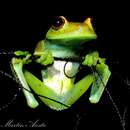en
names in breadcrumbs


The Demerara Falls tree frog (Boana cinerascens) is a species of frog in the family Hylidae found in Bolivia, Brazil, Colombia, Ecuador, French Guiana, Guyana, Peru, Suriname, and Venezuela. Its natural habitats are subtropical or tropical moist lowland forests, subtropical or tropical swamps, rivers, freshwater marshes, intermittent freshwater marshes, rural gardens, and heavily degraded former forests.
{{cite journal}}: CS1 maint: multiple names: authors list (link) The Demerara Falls tree frog (Boana cinerascens) is a species of frog in the family Hylidae found in Bolivia, Brazil, Colombia, Ecuador, French Guiana, Guyana, Peru, Suriname, and Venezuela. Its natural habitats are subtropical or tropical moist lowland forests, subtropical or tropical swamps, rivers, freshwater marshes, intermittent freshwater marshes, rural gardens, and heavily degraded former forests.